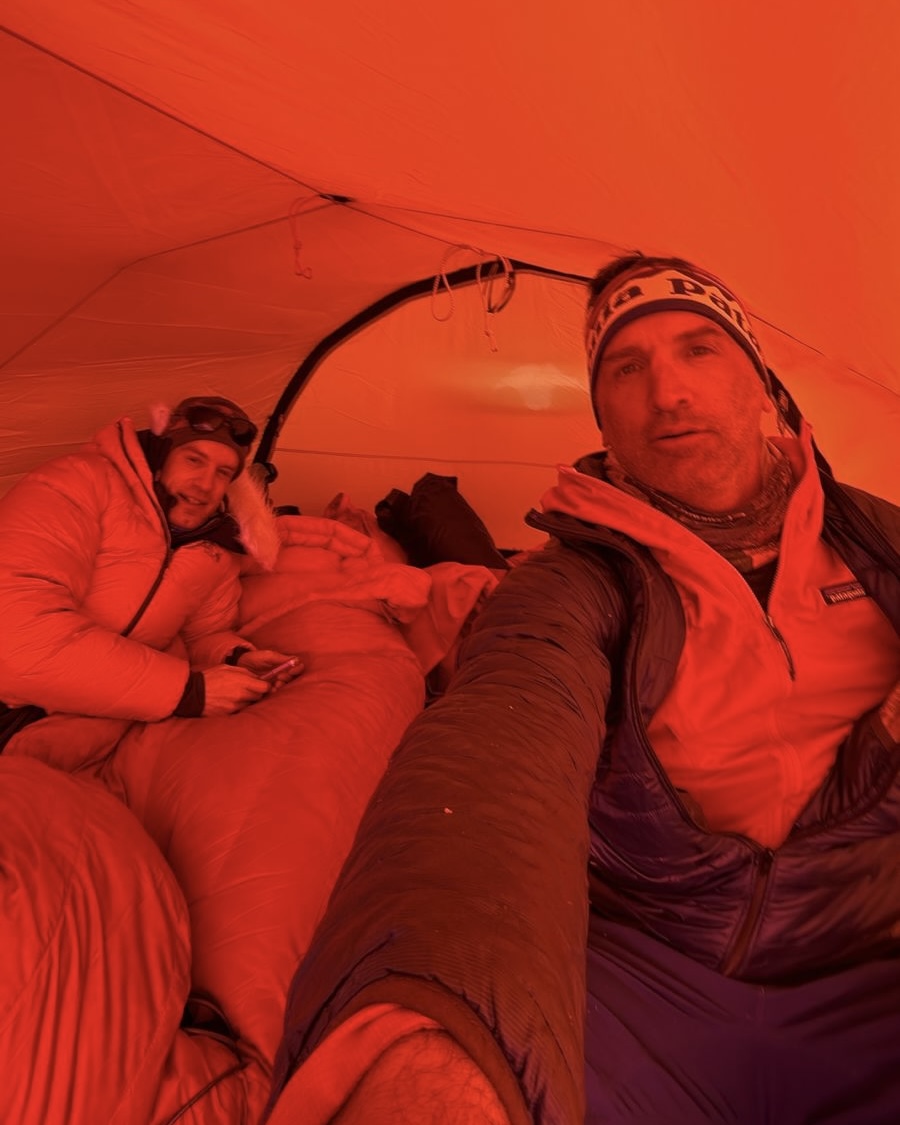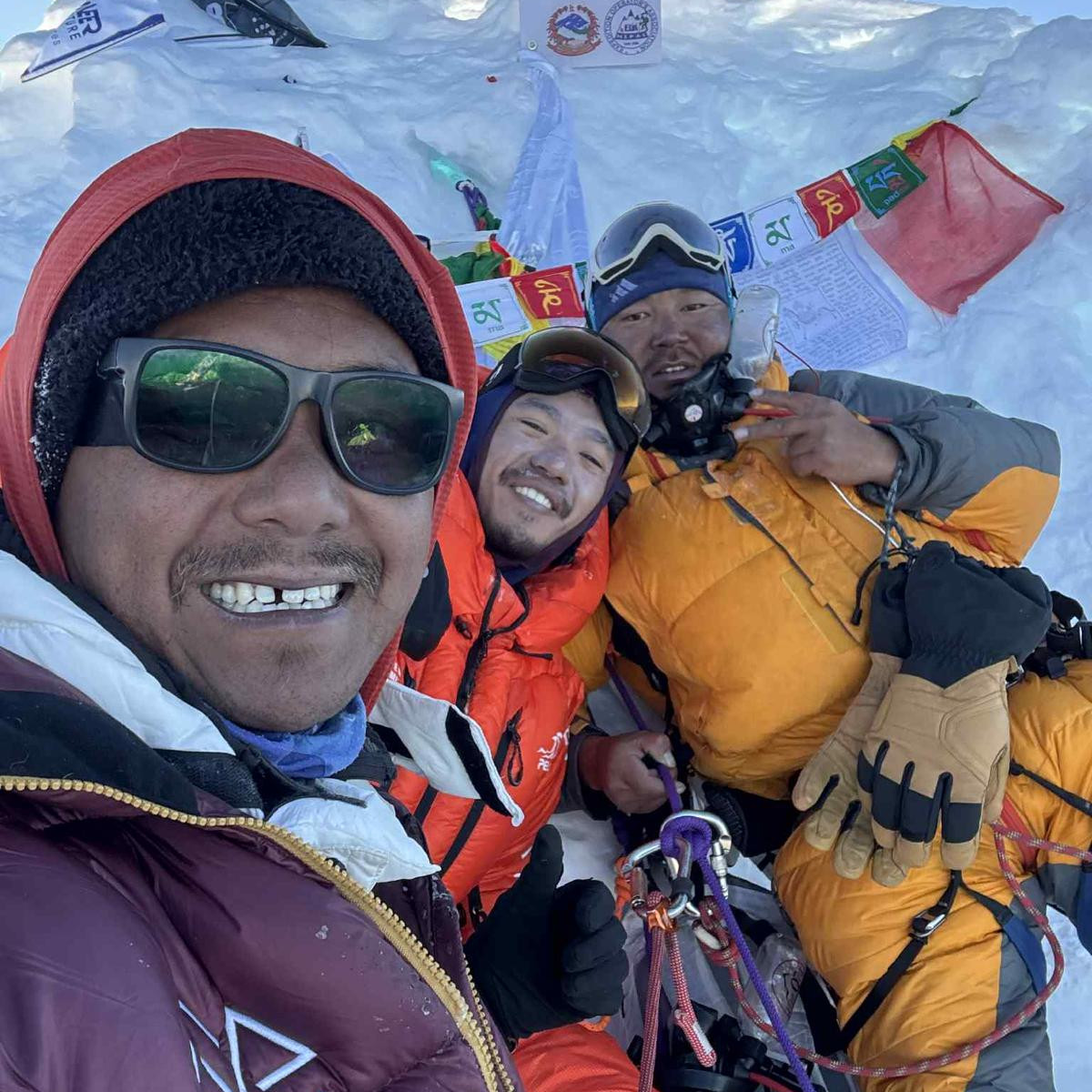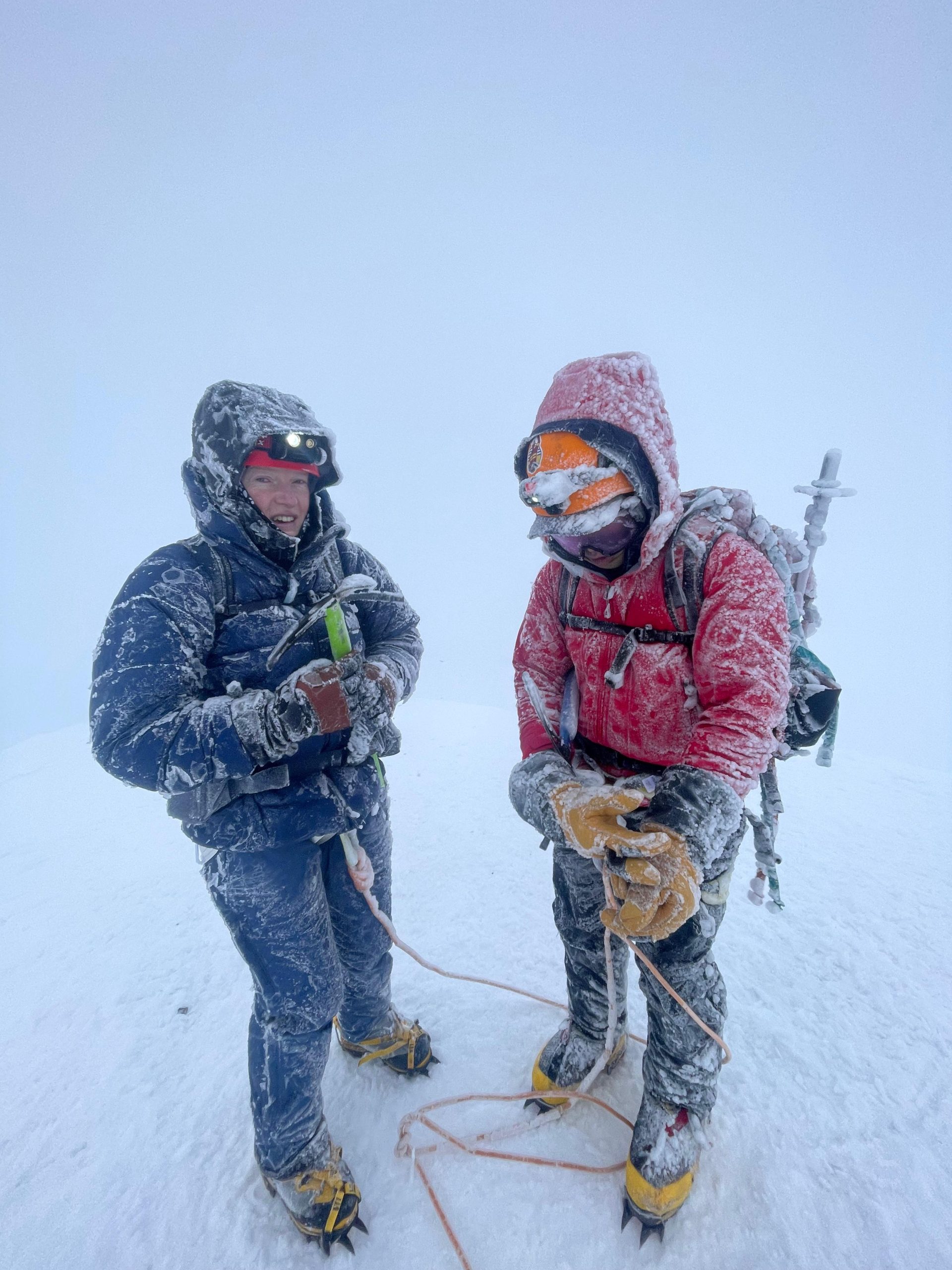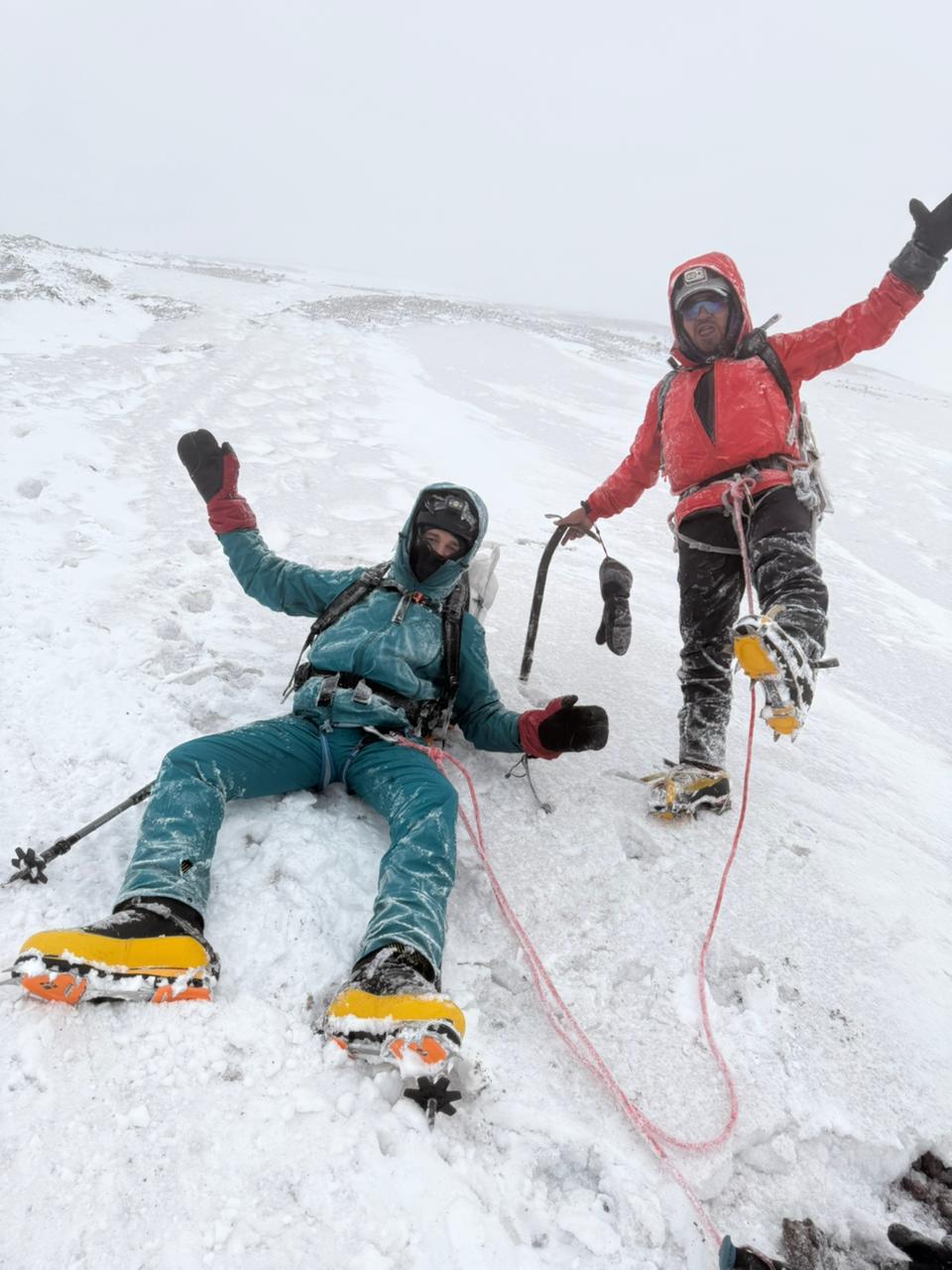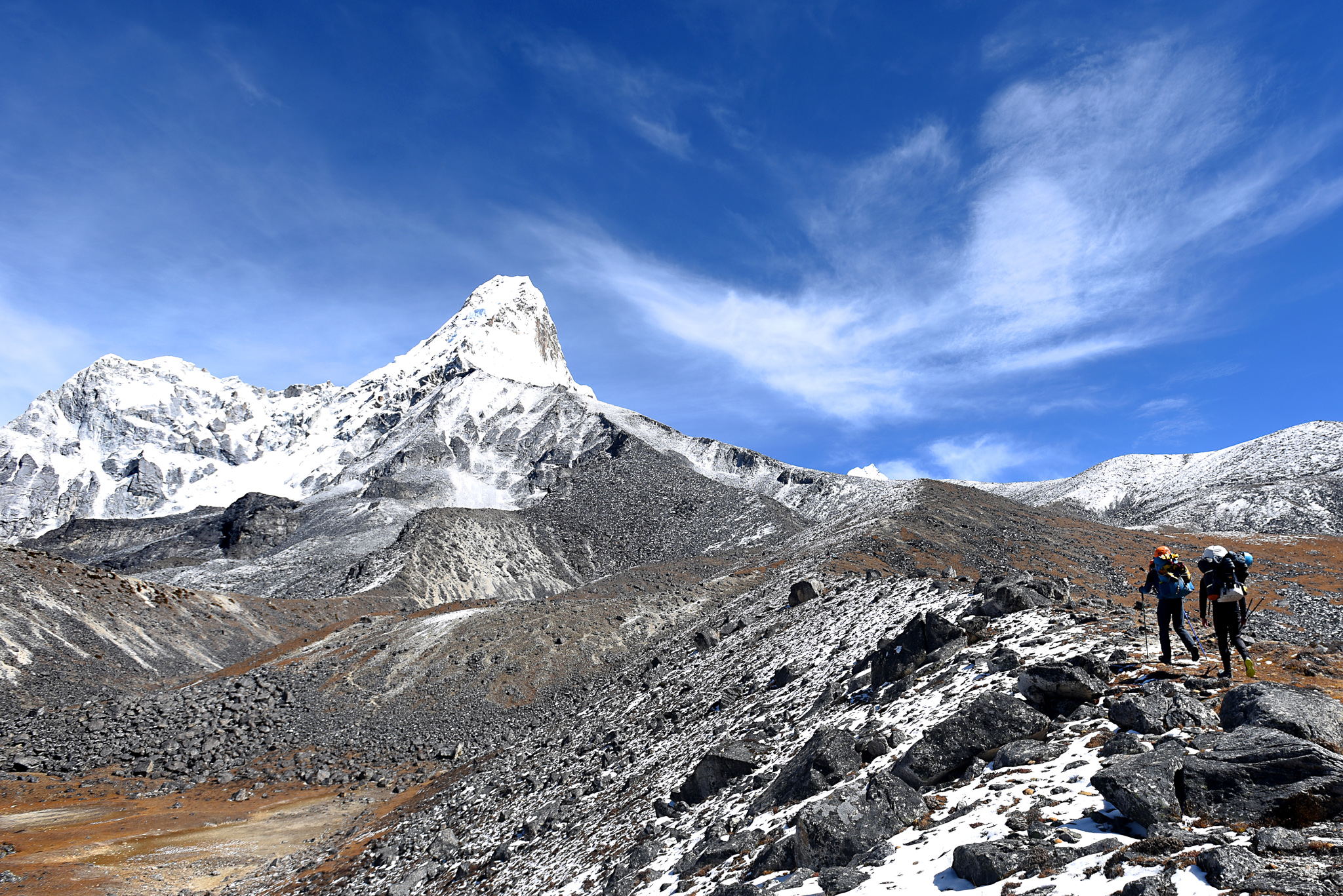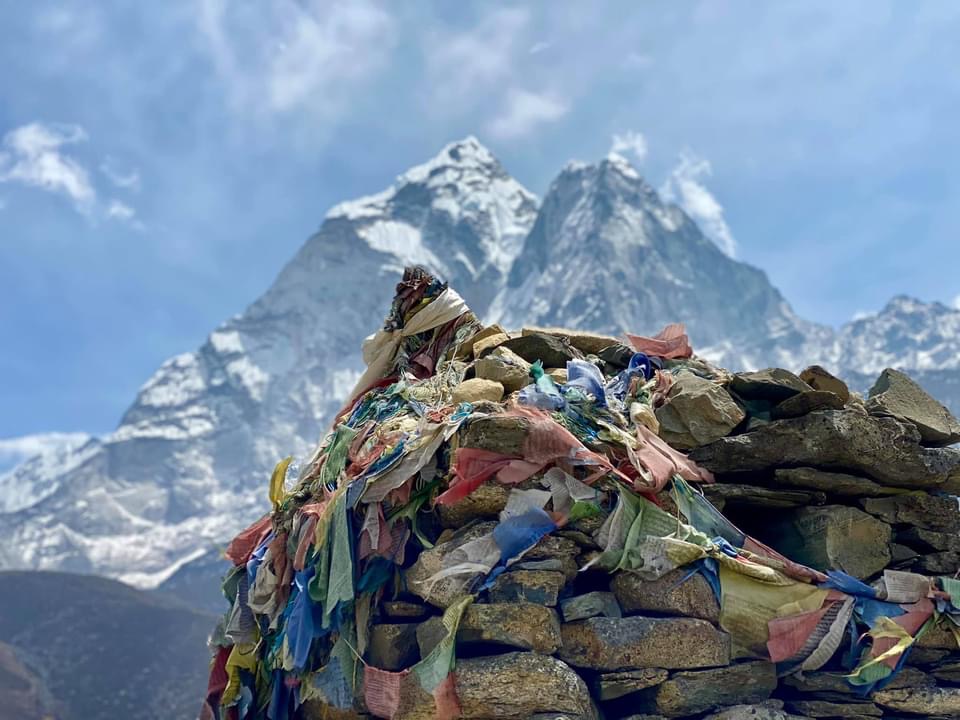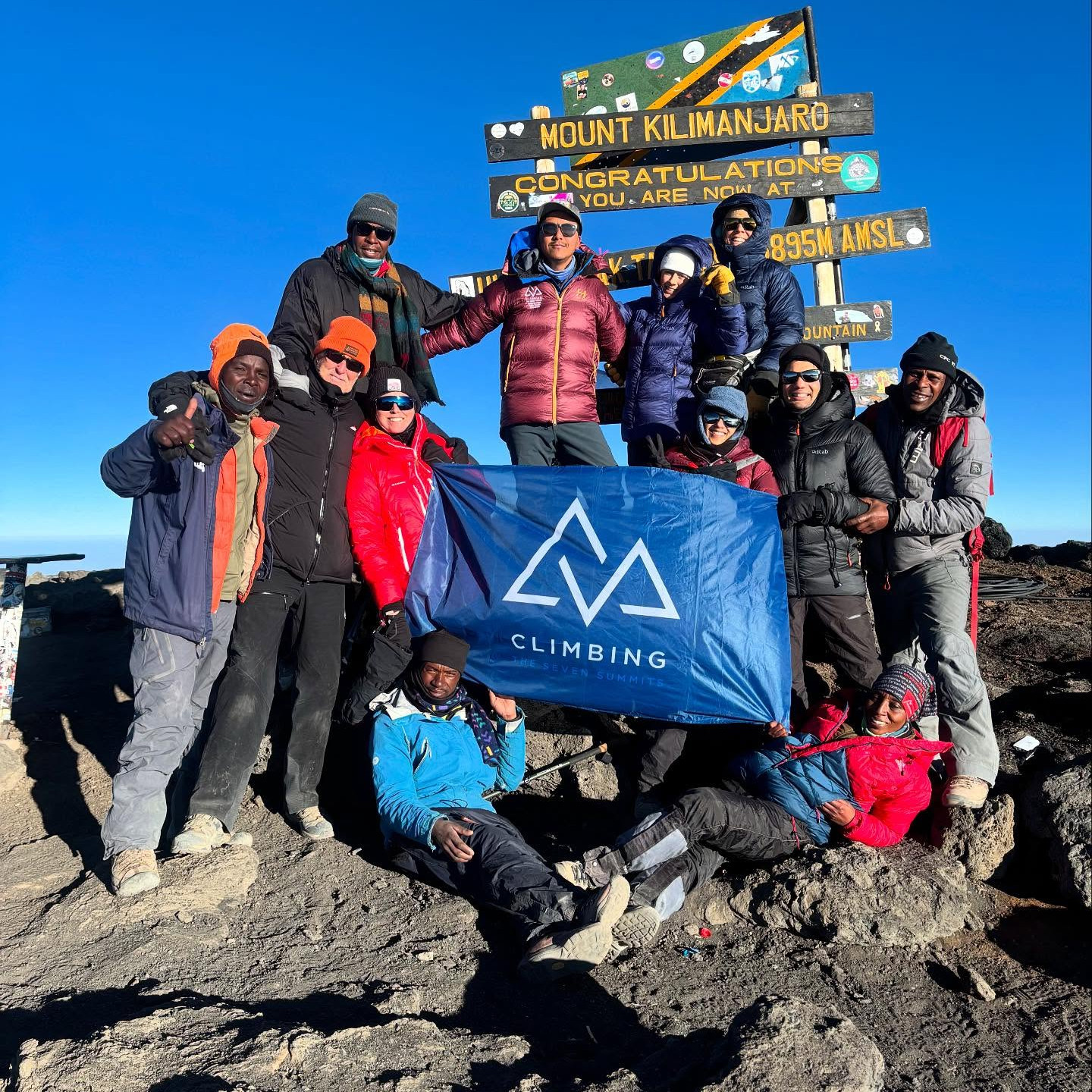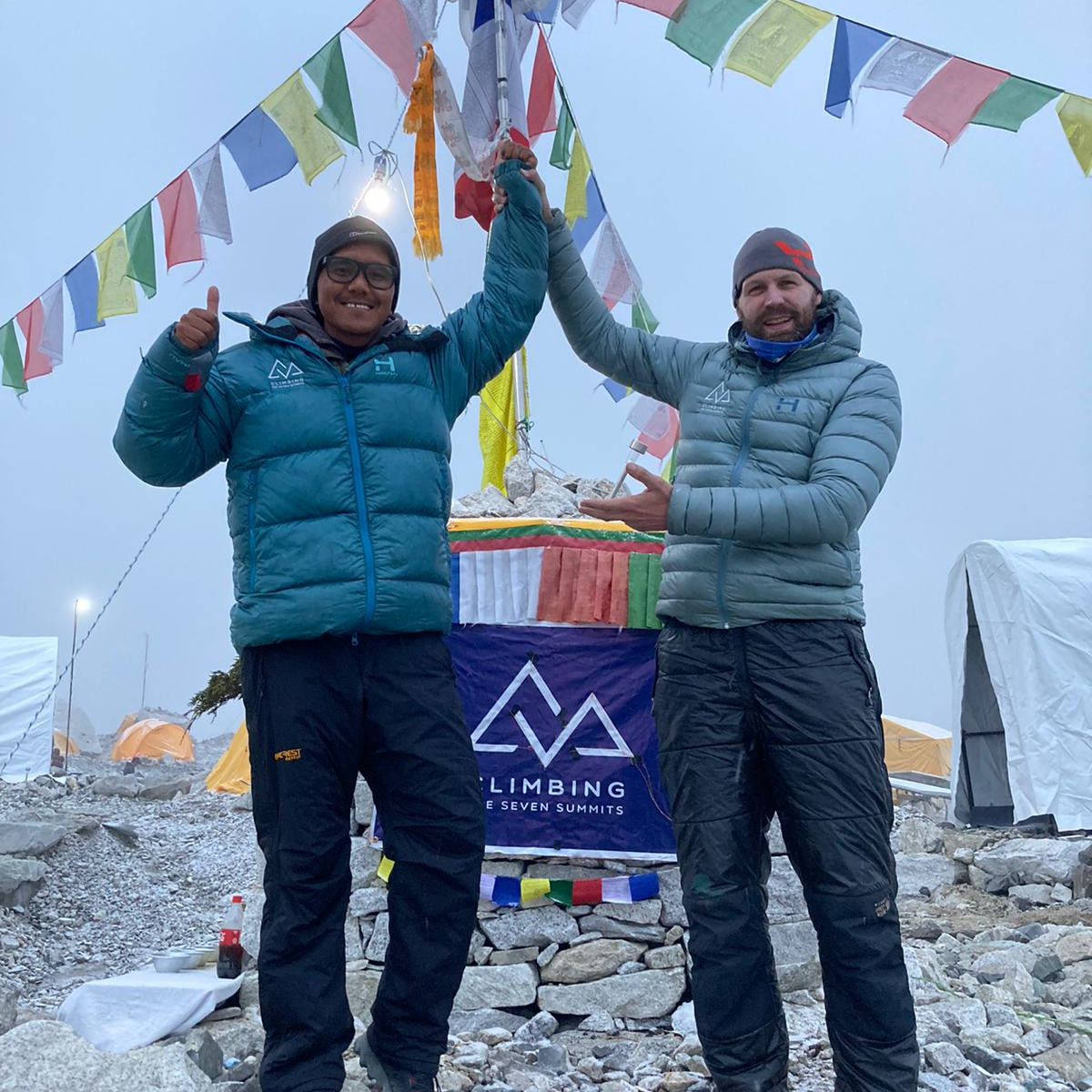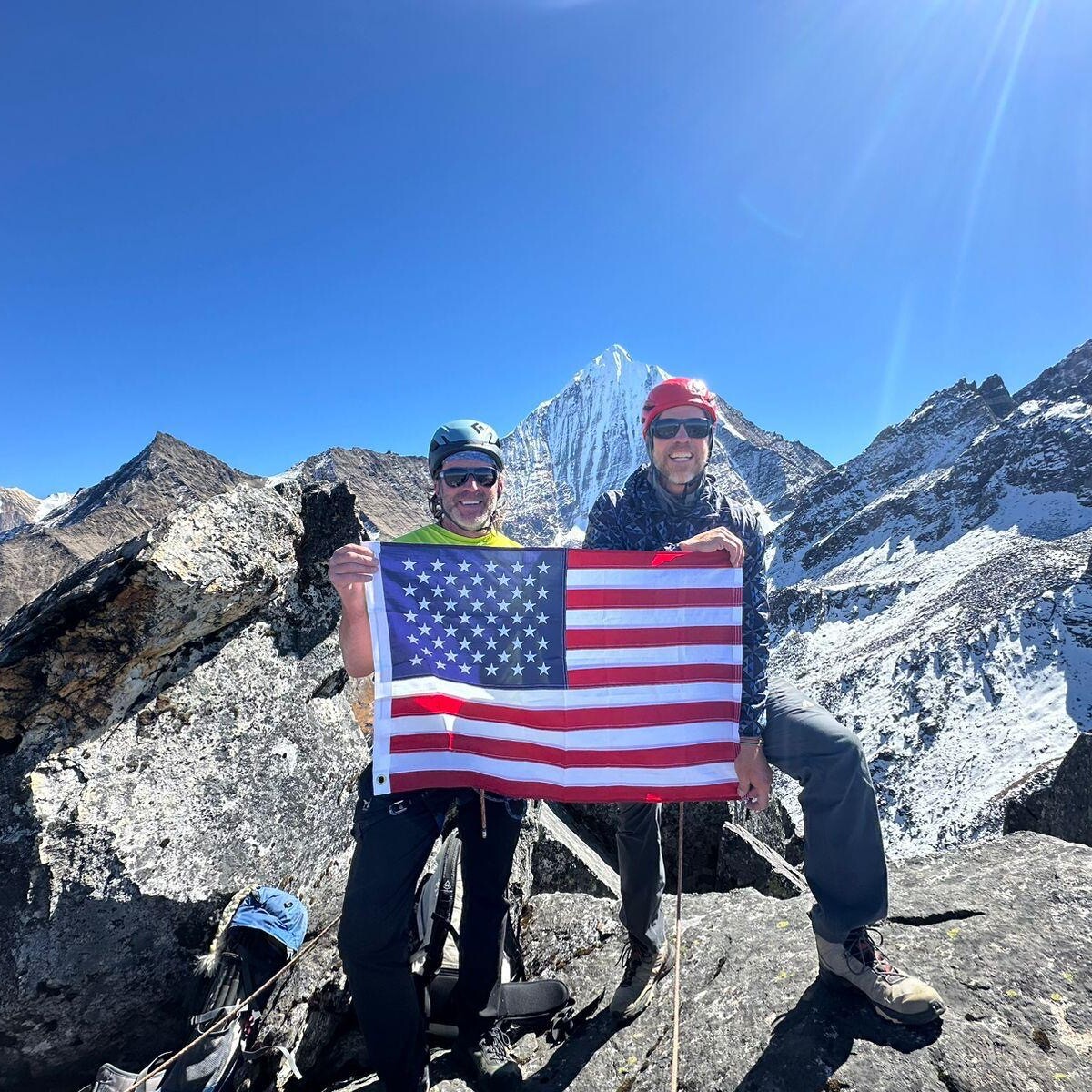CTSS Vinson and Antarctica Season Begins
Vinson and Antarctica Season Begins
Antarctica is officially open for the season, and our first CTSS team is already on the ice. With twenty four hour daylight settling in and early weather windows stabilizing, the continent is shifting into its short but spectacular climbing window. This is one of the most remote and pristine environments on Earth, and we are excited to begin another year of expeditions across the ice.
Most of our climbers this season will be heading to Mount Vinson, traveling through Union Glacier before moving into the Ellsworth Mountains for their summit push on Antarctica’s highest peak. Others will begin with the South Pole Last Degree Ski, spending eight days traveling the final degree of latitude to the geographic South Pole before returning to Union Glacier to launch their Vinson climb. A smaller group will fly farther into the interior for Mount Sidley, Antarctica’s tallest dormant volcano and one of the least visited summits in the world.
Our Antarctica roster this year includes some of the strongest guides in the industry: Mike Bennett, Ty Sauerbrey, and Tomi Ceppi, who has fourteen Vinson expeditions under his belt with twelve successful summits. Last week, Tomi shared a few behind the scenes preparations from South America before making his way to the blue ice to kick off our season.
Our first team on the ice with Tomi is our Last Degree Ski team, who flew from Union Glacier to 89°S today and immediately began their traverse. Over the next four days, they will ski the final stretch to the geographic South Pole at 90°S, traveling six to eight hours per day across near flat snow and building camp each night on the glacier. Temperatures hover around negative forty while the sun circles overhead. After reaching the Pole, the team will fly back to Union Glacier to meet their Vinson teams.
As the season unfolds, we will be sharing regular updates, photos, and behind the scenes footage from Vinson, the Last Degree Ski, and Mount Sidley. Follow along on the CTSS blog and social media as our teams move through one of the most remote and extraordinary landscapes on the planet.
Photo from Tomi Ceppi, Last Degree Ski team
4 Breathing Mistakes That Can Cost You Your Summit (and How to Fix Them Before Your Expedition)
4 Breathing Mistakes That Can Cost You Your Summit
(and How to Fix Them Before Your Expedition)
Guest Post by Anthony Lorubbio: Founder & Head Coach of Recal Training
Breathwork isn’t the first thing most climbers think about when preparing for a major objective, but at altitude, it often becomes the deciding factor between moving well and turning around early.
I’m Anthony Lorubbio, Founder and Head Coach at Recal Training. I’ve worked with hundreds of climbers, and time after time I see the same pattern: when the stakes rise and the air thins, breathing—not fitness—is what makes or breaks performance.
I like to think about preparing for an expedition the same way I think about packing my climbing pack. You’ve only got so much room, and every ounce counts. So you start filling it with the things you can control. Physical training, check. Nutrition planning, check. Gear selection, check. You’ve packed your logistics, your fitness, your layering system, all the things that make you feel ready. But most climbers overlook one of the most powerful (and lightest) tools of them all: their breath.
Breathwork is something you carry every step of the way, yet few people ever think to train it. It is also one of the most common reasons someone is forced to abort an expedition.
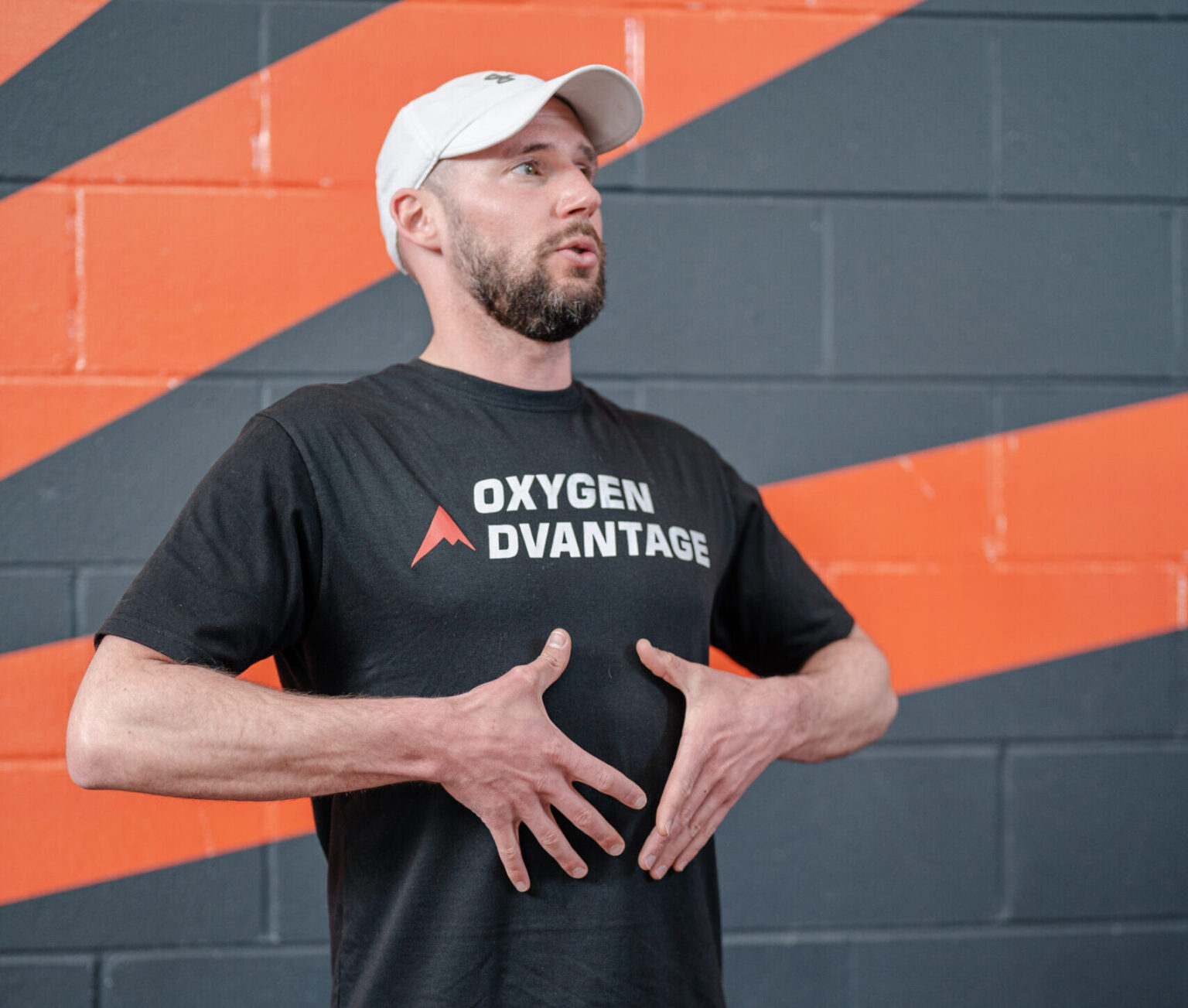
We spend months building leg strength, obsessing over acclimatization schedules, maybe even dialing in what we’re eating on the mountain with a nutritionist. But almost no one trains the very thing that determines how much oxygen actually gets used by your body, how well you breathe. So, before you zip up this hypothetical backpack and head to base camp, let’s make sure you’re not leaving one of the most important tools behind.
Below are the four most common breathing mistakes I see climbers make (the ones that can actually change your summit success) and the exact training and techniques I give my own clients before they fly or trek into base camp. These techniques are practical, evidence-based, and field-tested. And yes, I’ve tested them on myself, sometimes in the most epic and humbling of ways.
But before we even dive in, let’s start with a baseline test to find out how well YOU breathe. It’s called the Recal Breath Index, and it takes about 5 minutes to get a clear picture of how sharp your breathing mechanics are and how efficiently you utilize oxygen and carbon dioxide.
Knowing your Breath Index score will help you identify the weakest parts of your own breathing and get you on track to feeling less out of breath and stronger at the most challenging moments on the mountain.
- Mistake #1: Over-breathing (hyperventilation) when the stakes and altitude are highest
- Mistake #2: Too much mouth-breathing
- Mistake #3: Weak diaphragmatic engagement (breathing high and shallow)
- Mistake #4: Neglecting respiratory muscle training (RMT/IMT)
- Demystifying Breathwork Myths
- Watch our FREE Breathwork Webinar with Anthony
- Your Next Steps: Work with Anthony
Mistake #1: Over-breathing (hyperventilation) when the stakes and altitude are highest
Why is this a problem?
Over-breathing slows you down and taxes your respiratory muscles beyond their capacity. You likely won’t get efficient breaths (think: short, shallow, upper-chest breathing) and, paradoxically, taking in TOO MUCH air doesn’t work the way you think it does. It actually offloads too much carbon dioxide, which your body actually needs to release oxygen efficiently to your muscles. This means you’re working really hard for not much return on investment.
What to do about it?
You need to train for the feeling of breathlessness. Specifically, your breathing mechanics and CO₂ tolerance. Here’s a protocol for just that: Breathe Light.
How to Guide: Breathe Light
Watch the video first for guided practice, or use the steps below to do it on your own.
- In a comfortable seated position, breathe normally and place your pointer finger under your nose.
- Observe your breath as it enters and leaves your nose. Notice the movement in your lower belly and rib cage, as well as airflow on your finger. Try not to change the mechanics, just notice.
- Once you have an idea of how normal breathing feels, begin slowing your breathing. So much so that you can’t feel the air as it comes in and out through your nose. The goal is to reduce your breathing volume and feel a slight “hunger” for air.
- Continue this very slow breathing for 3 to 5 minutes.
- If you notice that your breathing rhythm is getting fast or chaotic, it means your need for air is too great. In this case, stop the exercise and breathe normally for 15 seconds or so, then resume gentle, light breathing to create a tolerable need for air.
Benefits of Breathe Light
- Reduced chemoreceptor sensitivity to carbon dioxide accumulation (i.e., higher CO2 tolerance and less “out of breath” feeling)
- Improved oxygen uptake and delivery (through something called the Bohr effect)
- Improved concentration and attention
- Proper diaphragmatic breathing mechanics
- Build resilience to your body’s natural stress response
NOTE: This exercise is not suitable for those with severe health conditions or those in the first trimester of pregnancy.
Summit Day Tip: If you feel panic breathing, don’t just breathe harder. Force a few full, low breaths and then use pressure-assisted exhales on the hardest moves.
Mistake #2: Too much mouth-breathing
Why is this a problem?
Mouth-breathing at altitude dries and irritates the respiratory tract, increases the risk of dehydration, and can trigger exercise-induced bronchoconstriction. We recognize that mouth-breathing is unavoidable at times (highly dependent on your CO2 tolerance). But habitual mouth breathing at altitude comes with three devastating consequences:
- No heating/humidification/filtration: Nasal sinuses warm and humidify incoming air; mouth breathing injects cold, dry air straight into the lower airways. On high-altitude climbs, that matters: dry, cold air increases airway irritation.
- Higher risk of exercise-induced bronchoconstriction: Classic pulmonary physiology shows that mouth breathing can worsen airway narrowing during exercise; nasal breathing tends to protect against that response. If your airways tighten at altitude, your breathing will spiral downward. And fast.
- Wasted mechanics: Mouth-breathing creates shallow, upper-chest patterns, which reduce efficiency. Nasal breathing engages diaphragmatic breathing (low and full breaths). 70% of the oxygen that diffuses into your blood happens in the lower 30% of your lungs. Get the air down there.
What to do about it?
Train your nasal breathing. Your nose is a muscle, and if you don’t use it, you lose it. This is especially true for those with a deviated septum or excessive mucus production.
To train your nose muscles, begin focusing on breathing as much as possible through your nose, especially on your inhale. During workouts, in between sentences while talking, and particularly at night. If you wake up with a dry mouth, you’re probably breathing with it at night. We recommend MyoTape to help you make the switch to nighttime nose breathing.
When you train for your climb at the gym or outdoors, you can use progressive re-education to activate your nose muscles. Start with nose-only breathing during lower-intensity movement, then layer in intensity while maintaining nasal flow until it’s no longer possible, and revert to Nose-Full-Low (more on that below) as a safety net.
If you have a history of bronchoconstriction or asthma, work with a clinician and consider nasal training and warming strategies as part of your preparation. You’ll stay drier, reduce your exercise-induced bronchoconstriction risk, and protect your airway function for the long haul.
Mistake #3: Weak diaphragmatic engagement (breathing high and shallow)
Why is this a problem?
Shallow, chest-dominant breathing leaves your strongest respiratory muscle, the diaphragm, barely engaged. Yet most people breathe that way. Learning to breathe low and fully expand your rib cage properly distributes the workload and keeps your oxygen delivery system stable and efficient, especially when the trail steepens and the air thins.\
What to do about it?
During your training, use the Nose-Full-Low technique. Using your nose, take full breaths (big, diaphragmatic inhalations), let the air fill your belly, and engage your diaphragm. You can also practice hook-lying diaphragmatic breathing (see details below) and use a diaphragm-training belt, such as the Buteyko Belt. This not only strengthens your diaphragm but also gives you tangible physical feedback on the location of movement with each breath. You will soon breathe subconsciously into your belly.
Another technique you can use during training is balloon breathing, which simply involves using your breath to inflate a balloon. This isn’t just about increasing lung-cage elasticity, though it does that; it’s specifically useful because it trains for pressure breathing on the mountain.
On the mountain, you’ll often hear guides mention the term pressure breathing. But what does that mean? Basically, it’s a full inhale, then a moderately forceful, slightly pursed-lip exhale that raises airway pressure and helps keep alveoli open and gas exchange more effective despite low ambient pressure. That positive pressure during expiration has been shown in both lab and field settings to increase arterial oxygen saturation and reduce acute mountain sickness symptoms after trekking to high altitude. Training with balloon breathing and positive end-expiratory pressure (PEEP) devices conditions you to use these mechanics without wasting energy.
Mistake #4: Neglecting respiratory muscle training (RMT/IMT)
Why is this a problem?
As you know, air pressure is lower at high altitudes than at sea level, and, since a gas moves from high-pressure areas to lower-pressure areas, this creates a problem getting sufficient air into your lungs. In other words, the air outside your lungs is at a lower pressure, so it will take more effort to pull it into your lungs. With this extra effort, with every breath, you’re getting closer to muscle failure for your primary inspiratory muscles (diaphragm and external intercostal muscles). If those muscles fatigue, your breathing becomes shallow and inefficient, which cascades into lower SpO₂, worse exercise economy, and earlier locomotor (leg) muscle fatigue (see: respiratory muscle-induced metaboreflex).
Targeted respiratory muscle training (RMT), like air-resisted diaphragmatic breathing, balloon breathing, and pressure breathing drills, strengthens the muscles that power your inhale and exhale. Research has shown that climbers and endurance athletes who perform inspiratory muscle training (IMT) maintain higher oxygen saturation at altitude than those who don’t.
Controlled studies of inspiratory muscle training (IMT) show it can attenuate the drop in arterial oxygen saturation at high altitudes. In one notable investigation, IMT increased inspiratory strength and blunted the fall in resting SpO₂ at ~4,880–5,550m compared with controls. In other words, trained respiratory muscles helped keep oxygen levels higher when it matters most.
What to do about it?
Make respiratory muscle training (RMT) a non-negotiable part of your pre-expedition training.
How to Guide: Hook-Lying Diaphragmatic Breathing
Watch the video first for guided practice, or use the steps below to do it on your own.
- From a hook lying position (lying flat on your back, feet flat on the floor, knees at a 90-degree angle), breathe deeply and engage your diaphragm. Feel your diaphragm flatten and expand 360 degrees around the base of your lower rib cage/belly.
- You should block one nostril to reduce air resistance. Even better, you could use a device to resist air, like the SportsMask, Airofit, or POWERBreathe. Or a device like the Isocapnic Breathe Way Better to build muscular endurance.
- Add the Buteyko Belt for physical resistance around your ribcage. Alternatively, stack a weight on your lower belly.
- Start with 3x sets of 10 deep breaths. Rest ~1 minute in between each set. Build air resistance, weight, speed, and reps as you advance your training.
Here’s a practical training outline:
- IMT (inspiratory muscle training): ~10 minutes total, 3-4 days/week, using an IMT device or structured coach-led protocol for 4–8 weeks. Build intensity progressively.
- Balloon Breathing (expiratory muscle training): Try 3 sets of 1 or 2 minutes each, focusing on a full inhale and a pressurized exhale to blow up the balloon. Blow it up as many times as you can.
- Training Integration: Add loaded hiking sessions where the breathing technique is deliberately practiced under progressive fatigue. Consider wearing a SportsMask or another air-resistance device on your hikes to simulate the lower air pressure at high altitude.
Combine respiratory muscle training (RMT) with the Nose-Full-Low technique and CO₂ tolerance work, and you’ll be stacking physiological adaptations: stronger respiratory muscles, better handling of high CO₂ in your blood, and improved alveolar mechanics when you use pressure breaths on the mountain.
Demystifying Breathwork Myths
Slow breathing is always better. Not necessarily. While it’s good below ~7,500 ft, it’s not good during your first hours at a new high altitude. You must be able to increase ventilation when the body demands it; that capacity to up-regulate ventilation without losing technique is our training priority.
Breathwork training is only for elite athletes. No. Respiratory muscle training (RMT) and nasal-breath training are low-risk/low-cost, high-value pieces of proper preparation for any climber aiming for multi-day, high-altitude objectives.
I can skip acclimatization now that I’ve done breathwork training. Absolutely not. Breathwork training increases your capacity to maintain higher blood oxygen saturation and performance. However, it is not a substitute for slow, sensible acclimatization, good hydration, and listening to your CTSS guides and doctors. If you experience breathlessness that’s out of character, a cough with frothy sputum, crackling sounds inside your lungs, or a high fever, treat it seriously. Seek medical attention and descend immediately. HAPE and other serious altitude illnesses are uncommon but real, and they’re not something breathwork training or willpower can overcome.
Watch our FREE Breathwork Webinar with Anthony
Improve your altitude endurance with breathwork training. Join Anthony Lorubbio of Recal to learn evidence-based breathwork techniques that improve oxygen efficiency and resilience at altitude. There are three sides to breathwork training: mechanical efficiency for optimal oxygenation, high-altitude simulation exercises, and respiratory muscle training. This webinar will show you how to integrate breathwork exercises that target those three areas into your training, even on a tight schedule. The data speaks for itself; get ready to transform your performance on Everest and other iconic peaks!
Your Next Steps: Work with Anthony
Find out which of these four mistakes you might be making. Don’t just guess if your breathing is mistake-free. Find out using the Recal Breath Index discussed at the beginning of this blog.
It will break down your breathing into two parts:
- The Biochemistry of your Breathing: How efficiently you exchange oxygen and carbon dioxide, regulate blood pH, and deliver oxygen to your muscle tissue. Plus, you will finally get a real, trackable metric for the out-of-breath feeling.
- The Biomechanics of your Breathing: The efficiency of airflow, your lung expansion, and the proper engagement of your diaphragm
Taking the Recal Breath Index is the first step toward identifying both the weakest and strongest parts of your breathing. And most importantly, it will give you insight into what needs extra attention.
If you’re ready to reinforce this work with a focused training plan, reach out to Anthony at anthony@recaltraining.com. A few targeted exercises now can make a real difference on the mountain.
Ecuador Update: Perfect Weather and Unstable Snow on Cayambe
Ecuador Update: Perfect Weather and Unstable Snow on Cayambe
Our Ecuador Volcanoes team has spent the last three days on Cayambe (5,790m / 18,996ft), moving steadily through the final stage of their program. After leaving Hacienda La Cienega, the group transferred to the Cayambe Refuge, settled in, and began their acclimatization with a hike to a nearby lake before resting up for the climb.
This morning’s summit push started under excellent weather—clear skies, calm conditions, and great visibility. Three climbers (Elise, Guy, and Norm) set out with the guide team while two teammates chose to remain at the refuge. As the group gained elevation, they reached roughly 16,700ft and began assessing the snowpack. The tests showed a 20cm slab sitting on more than three feet of soft, wet snow, creating a highly unstable layer. Despite the perfect skies, the underlying structure wasn’t safe. The guides made the call to turn the team around due to significant avalanche risk.
Everyone is now en route to Papallacta Spa Resort, shifting gears into recovery mode with a well-deserved soak in the hot springs.
Photos from CTSS Guide Edgar P.
Ecudaor Team Pushes Through Weather on Cotopaxi
Ecudaor Team Pushes Through Weather on Cotopaxi
Our Ecuador Volcanoes team has been on the move the last two days, pushing into the heart of the Andes for a summit bid on Cotopaxi (5,897m / 19,347ft), the world’s highest active volcano and one of the country’s most iconic peaks. After a steady hike to the refuge under clear skies, the team launched their summit push late in the evening. For the first few hours, conditions were favorable, calm winds, firm snow, and good visibility. As the group reached the start of the glacier and split into rope teams, the weather began to deteriorate. Wind speeds increased, visibility dropped, and the snow softened, making for more complex travel. Despite the deteriorating weather, everyone climbed well and made sound decisions in difficult conditions.
Two climbers reached the summit with CTSS Guide Julian.
Congratulations to:
- Elise L.
- Norm F.
Cotopaxi is typically known for its stable weather and straightforward route, but it reminded us once again that the mountain and the weather are in charge.
After regrouping and recharging at Hacienda La Cienega, the team is now en route to Cayambe (5,790m / 18,996ft), the only major glaciated mountain in the world that sits directly on the equator. Compared to Cotopaxi, Cayambe offers more complex terrain, deeper crevasses, and more variable weather due to its proximity to the jungle. It’s quieter, more humid, and often cloudier, requiring solid navigation and teamwork. With roughly 1,200 meters (3,937ft) of elevation gain on summit day, it’s the perfect next challenge in the team’s Ecuador progression.
Photos from CTSS Guide Edgar.
High Winds and Smart Decisions on Mera Peak
High Winds and Smart Decisions on Mera Peak
Julie M. and CTSS guide Tendi Sherpa reached Mera Peak’s high camp but made the call not to push for the summit. As Julie shared, “Sometimes the mountain says no. The winds were absolutely insane, so we made the call to not attempt the summit. Very glad we didn’t, the teams that went up almost all turned around and now a bunch of rescues.”
A tough but wise decision, one that reflects the judgment and humility that define great climbers.
Elsewhere in Nepal, our Ama Dablam team is wrapping up their expedition, arriving in Lukla today before flying back to Kathmandu tomorrow. Meanwhile, our First Ascent team has reached Jumla and will begin the journey home with a jeep drive to Surkhet tomorrow morning, followed by a flight back to the capital.
Photos from Julie M.
Summit Season in Motion: Ama Dablam, Mera Peak, and Ecuador
Summit Season in Motion: Ama Dablam, Mera Peak, and Ecuador
Across the Himalaya and the Andes, our CTSS teams are climbing strong and moving with intention.
In Nepal, CTSS guide Lhakpa Sherpa and clibmer Norman Croucher topped out on Ama Dablam (6,812m) early this morning, November 6th, after days of patience and smart positioning around both weather and crowding. Their timing paid off. They reached the summit under calm skies and are now safely back at High Camp, with plans to return to Base Camp tomorrow.
Elsewhere in the Himalaya, CTSS guide Tendi Sherpa and climber Julie M. are trekking toward Mera Peak (6,476m), moving through the villages of Kothe and Thagnag. Along the way, they paused to visit a monastery tucked inside a mountain cave at Thagnag for a quiet moment to reflect. This duo has now officially reached Khare Base Camp, and acclimatization hikes from Base Camp are already underway.
“Days on the trail, almost by ourselves, sunny days and fresh snow ~ perfection.” — Julie M.
And on the other side of the globe, in South America, CTSS guide Edgar Parra has welcomed our Ecuador Volcanoes team to Quito. Following a festive welcome dinner, the group is ready to begin their journey through the Avenue of Volcanoes, where classic Andean peaks and rich cultural landscapes set the stage for the climbs ahead.
Different peaks, same goals, safety and success, always in that order.
Photos below from Edgar and Julie.


Teams Progress as Skies Clear Over the Himalaya
Teams Progress as Skies Clear Over the Himalaya
Here’s the latest from our teams in Nepal as clear skies return to the region and flights to and from Lukla resume.
Our First Ascent team has made the decision to retreat after heavy snowfall swept across the Himalaya. They’re now on their way back to Jumla, scheduled to arrive on November 8th, with a flight to Kathmandu planned for the following day.
On Ama Dablam, Norman and CTSS guide Lhakpa are managing the mountain’s current congestion by holding at Camp 1 for a rest day. Both are fully acclimatized and ready to move higher but are wisely waiting for the right window as crowds thin and weather stabilizes.
Meanwhile, Julie and Tendi Sherpa are en route to Mera Peak. After flying to Lukla yesterday, they spent the day acclimatizing with a hike to 4,000 meters. Tomorrow, they’ll move to Thangnag at roughly 14,000 feet (4,267 meters) as they continue their journey toward the summit.
Photos Courtesy of Julie M.
The Mother-Son Summit: Kristin & Simon’s Kilimanjaro Adventure
The Mother-Son Summit: Kristin & Simon’s Kilimanjaro Adventure
Some climbs are about summits. Others are about stories, and the people you share them with.
For Kristin and her 12-year-old son Simon, their Kilimanjaro expedition became both a test of endurance and a shared journey between mother and son that changed how they see each other, and the mountains, forever.
They trained side by side for months—running, hiking, and swimming—trading weekends with friends and dive competitions for long miles under heavy packs. It was the first time they had ever trained for something together, and the shared challenge brought them closer in ways neither had expected.
Preparing from their low-altitude home, they improvised, with heat replacing thin air and determination replacing elevation. To simulate altitude before the trip, they flew to Colorado to hike a 14er. When a snowstorm swept in near the summit and they sheltered in a rock cave, they realized they were learning lessons far bigger than fitness. Kristin recalls the learning curve they had to adapt to, such as when to keep pushing, when to pause, and, of course, when to turn around.
Alongside them was CTSS guide Pega Sherpa, an eight-time Everest summiter known for his quiet strength, humility, and generosity. His steady presence on the mountain would become a defining part of their experience, and a friendship that’s lasted long beyond the climb.
These moments brought this mother-and-son duo closer, shaping the bond that would carry them to the Roof of Africa.
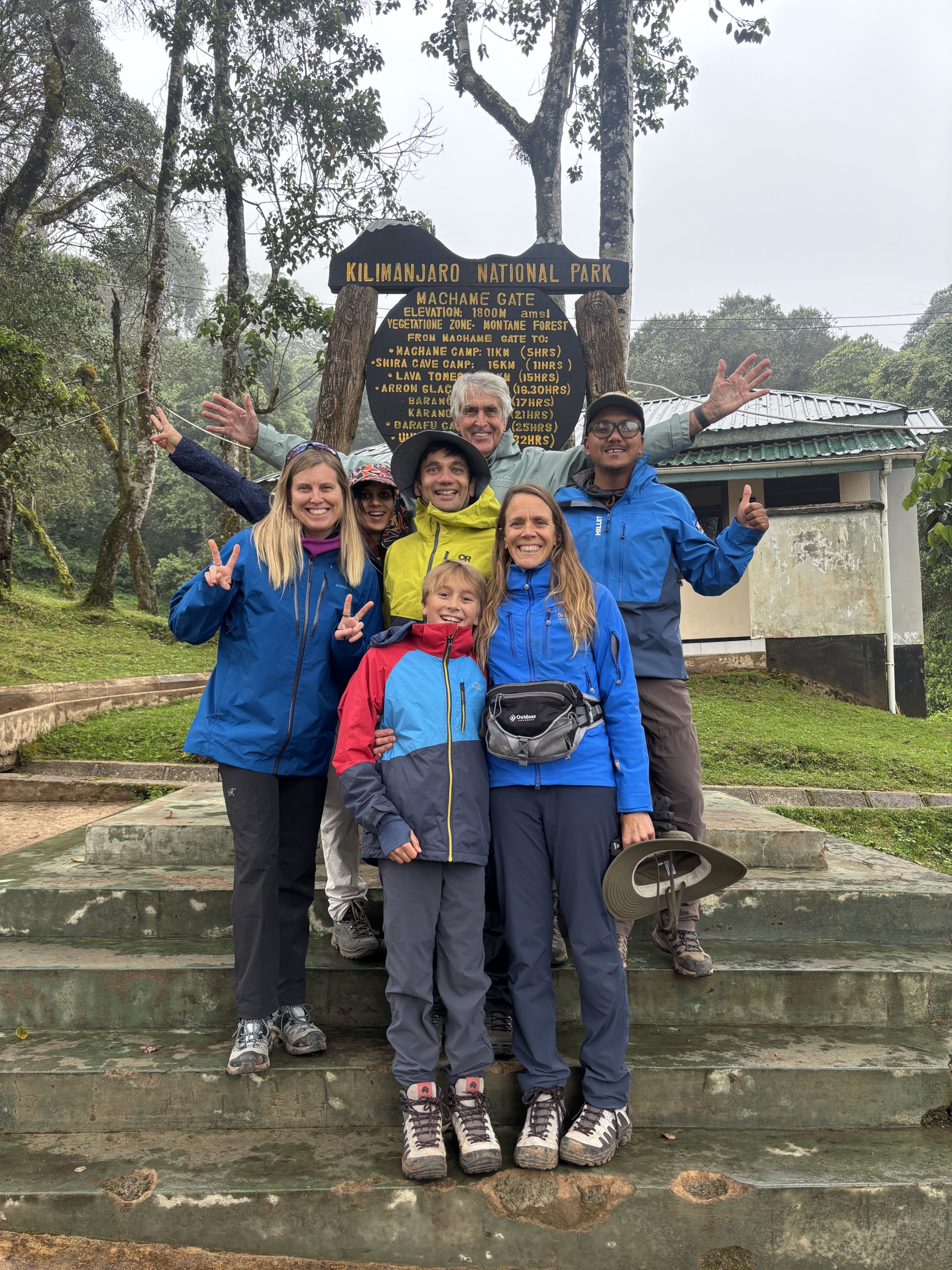
Kristin, how did it feel to be standing on the summit, staring out at the roof of Africa together?
“It was overwhelming. We were both in tears from the relief and wonder of actually realizing our dream. Simon had pulled ahead of the group with Mary, our head Tanzanian guide, and I watched from a distance to see him approaching the summit.
For me, it was one of the most emotional experiences of my life, something I compared only to childbirth. To watch my son, who had nurtured a dream from a seed to its completion, in the protective hands of a team of adept mountaineers—it was truly soul-filling. The team was so supportive of both of us, but they picked Simon up in the air, whooping and celebrating his victory. It was such a beautiful thing, full of pride, joy, and the relationships that had developed through such an intense and amazing feat.”
Before that moment on the summit, the real work began long before they reached Africa. Kristin and Simon shared what it was like to train together for Kilimanjaro.
“The process definitely brought us closer, as we had never trained for anything together up until that point. There were weekends when, instead of spending time with friends or competing on the dive team as in summers past, we went out for solo hikes, runs, or swims. Living at low altitude, we had to get resourceful—carrying heavy packs, hiking up to fifteen miles in the heat, and eventually flying to Colorado to hike a 14er to simulate altitude. There was a real learning curve with gear and pacing—when to push through and when to pause and reassess. Those challenges brought us closer and prepared us for the unknowns of Kilimanjaro.”
Shared Summits, Shared Generations
Kristin and Simon were not the only family team on the summit of Kilimanjaro that day. A father–daughter duo also shared the trail with them, adding to the sense of community that makes CTSS climbs so special. Watching different generations move toward the same goal brought something unique to the mountain, a reminder that adventure has the power to connect us at any age.
At CTSS, we’ve seen this again and again. Intergenerational climbing has become one of the most inspiring themes across our expeditions, and for good reason. Research shows that engaging in outdoor activities together across generations strengthens family bonds, communication, and mutual understanding. On the mountain, those benefits come to life in real time. Families learn to move at each other’s pace, trade leadership, and rediscover the value of shared challenge.
This year alone, we’ve seen that spirit unfold across continents. Emma and Sam Schwerin have climbed side by side from Ecuador, Kilimanjaro, and Mont Blanc to Denali, Aconcagua, and Everest, where Emma became the youngest American woman ever to reach the summit. Their journey to complete the Seven Summits has been a shared pursuit from the very beginning, a testament to how partnership and family can carry you to the world’s highest places. Also in Nepal, but on a different journey, Ethan Ong and his father, Harold Ong, took part in our Rugged Luxury Everest Base Camp Trek and Stay, where Ethan not only completed the trek to Everest Base Camp but also raised more than $9,000 for the Tendi Sherpa Foundation, proving that purpose and adventure can go hand in hand.
For Kristin and Simon, Kilimanjaro became part of that same story. Their climb reflected what we believe at CTSS: that the mountains are more than destinations. They are classrooms for patience, trust, and teamwork, places where generations come together to learn from each other, supported by guides who embody that same spirit of belonging and shared purpose. Our world-class team doesn’t just lead the way; they walk beside you, helping each climber find confidence that lasts long after the descent.

You climbed alongside Pega Sherpa, one of our top Everest guides. Simon, what did you learn from his leadership and experience on the mountain?
“Pega was so amazing. He told me about all kinds of different mountains he had climbed or wanted to climb in the future. I asked him so many questions about Everest and the Himalayas.
One day, my sleeping mat popped, and Pega gave me his because he said he didn’t need it. On summit day, he helped me feel better and told me to put on a hat because my head hurt. Five minutes later, my headache was gone. I just can’t believe how many mountains he’s climbed. He’s such an amazing guide, and I hope to climb with him again.”
For Kristin, watching Pega guide her son was something she’ll never forget.
“Pega was an incredible leader. He has an extensive mountaineering skillset, including hundreds of technical climbs throughout Nepal and eight Everest summits. Where some people might develop an ego around such mastery, Pega was the opposite—always humble, always calm, always helpful.
He carried our heavier items to lighten our load, lent us his sleeping mat when ours popped, gave Simon inspiring advice, taught him card tricks, checked our oxygen levels and heart rates every night before bed, and made us laugh.
We were all in tears when we had to part ways. We’re sure we’ve made a friend for life in Pega and continue to stay in touch. Simon follows Pega on Instagram and loves seeing his radical climbs throughout Nepal.”
Beyond the climb itself, you also experienced Tanzania—the food, the culture, and even waterfall and village tours before the expedition. Kristin, what stood out to you most?
“We spent a lot of time in the van traveling from place to place, and it gave us an opportunity to observe people we would never have seen otherwise. We were amazed to see young children walking unaccompanied to and from school, sometimes in uniforms, along busy highways.
The porters were incredible athletes, carrying up to twenty kilograms each day and arriving to camp hours before us. Other children had built toys out of bottle caps and scraps—showing such creativity and resilience.
At a coffee farm, we saw an extended family running the business together from plant to roast to sales, with song woven into every part of the process. That same joy and music carried us up the mountain on summit night. Whenever I felt overwhelmed, our guides’ voices seemed to lift me up and carry me. It was a transcendent, spiritual experience—hope, aspiration, determination, and teamwork all in one.”
Simon, you were our youngest climber to summit Kilimanjaro. How does it feel to tackle something so big at your age?

“I read a book in school called No Summit Out Of Sight, about Jordan Romero’s journey to climb the Seven Summits. It inspired me to climb Kilimanjaro and maybe more. If I’m being honest, I didn’t know I was CTSS’s youngest Kilimanjaro climber until after our trip. It was so amazing to be standing up there on the roof of Africa as a 12-year-old. I have been hiking my whole life, but never at high altitude.
Whenever I face a challenge now at home, I think of Kilimanjaro. If I can climb Kilimanjaro, I can push through and finish this. This was probably the most memorable thing I have done, and I can’t wait for the Mount Baker Alpine Academy next summer with CTSS.”
School is back in session, so we’re eager to know what you’ve told your friends about this experience. How do you describe what you achieved and learned?
“In Lexington, Kentucky, no kids really understand how difficult mountaineering is, nobody does it. When I got back to school, everyone was like “wow! You climbed Kilimanjaro”, and then forgot about it. One person actually congratulated me and made me feel really good about what I had done: my best friend, Aleksa. I called him every night before the climb, even though there was a seven-hour time difference. Anytime I got reception on the mountain, I tried to call him. My sixth-grade English teacher, Mrs. Hamby, had me read the book that inspired me, No Summit Out Of Sight. This year, I am going to be a guest speaker in her class when they are reading the book.”
Shared Summits, Shared Generations
Kristin and Simon’s journey to the Roof of Africa marked the start of a new kind of confidence, the kind that only comes from facing something vast together and emerging stronger on the other side. It reminded them that patience and trust sit at the heart of every challenge, on and off the mountain.
Their guide, Pega Sherpa, modeled that same quiet strength throughout the climb, steady, attentive, and deeply present. Guides like Pega embody what makes CTSS expeditions so unique: world-class skill paired with humility, heart, and genuine care for every climber’s journey.
For the Weeks-Sweeney family, that leadership turned an extraordinary adventure into a life-changing experience.
At CTSS, we believe mountains have the power to shape lives and strengthen relationships, one step and one shared summit at a time.
If you’re ready to start your own journey with a parent figure, or with a young person in your life, join us for a Rugged Luxury trek to Everest Base Camp, Kilimanjaro, or Machu Picchu, or for one of our introductory mountaineering courses on Mount Baker—where you just might bump into Kristin and Simon.
Himalaya Weather Update
Himalaya Weather Update
Due to current weather conditions, all CTSS teams are safely holding in place across the Himalaya. The First Ascent and Ama Dablam teams are standing by at their respective Base Camps, waiting for a safe weather window to begin their summit pushes. Both teams are fully acclimatized and ready to move as soon as conditions improve.
Meanwhile, our final climber of the season, Julie, a Seven Summits finisher, is in Kathmandu with CTSS guide Tendi Sherpa. After weather delays prevented their initial flight, they will remain in Kathmandu for a few days before departing on November 1 for Kothe, the gateway to Mera Peak.
We’ll share further updates as conditions evolve across the region.
Photos from the CTSS Archives of our 2024 First Ascent Team.
Rotations for Ama Dablam and First Ascent Teams
Rotations for Ama Dablam and First Ascent Teams
Our fall Himalayan season continues to unfold with steady progress across the range.
On Ama Dablam, the team has now completed their first acclimatization rotation, climbing up to Camp 2 before returning to Base Camp to rest and recover. Everyone is feeling good, and with a solid rotation under their belts, they’re aiming for a summit push in the coming days, conditions permitting.
Meanwhile, our First Ascent team has safely reached Base Camp. Reception is nonexistent in this remote valley, but one of our crew hiked down to make a call and pass along updates — the team is healthy, spirits are high, and all is running smoothly. Tomorrow, they’ll complete an acclimatization hike to roughly 5,200m before returning to BC to continue preparing for the climb ahead.
And in transit to the Himalaya, CTSS climber and Seven Summits finisher Julie is on her way to Nepal for a private custom itinerary with CTSS guide Tendi Sherpa, who also guided her on Everest in 2023. This journey includes a visit to Tendi’s home village—a truly special experience—followed by a climb of Mera Peak. We’ll share her blog so you can follow along as she documents her adventure from the trail.
More updates coming soon as our teams move higher into the season. Photo from CTSS Guide Lhakpa on Ama Dablam.




